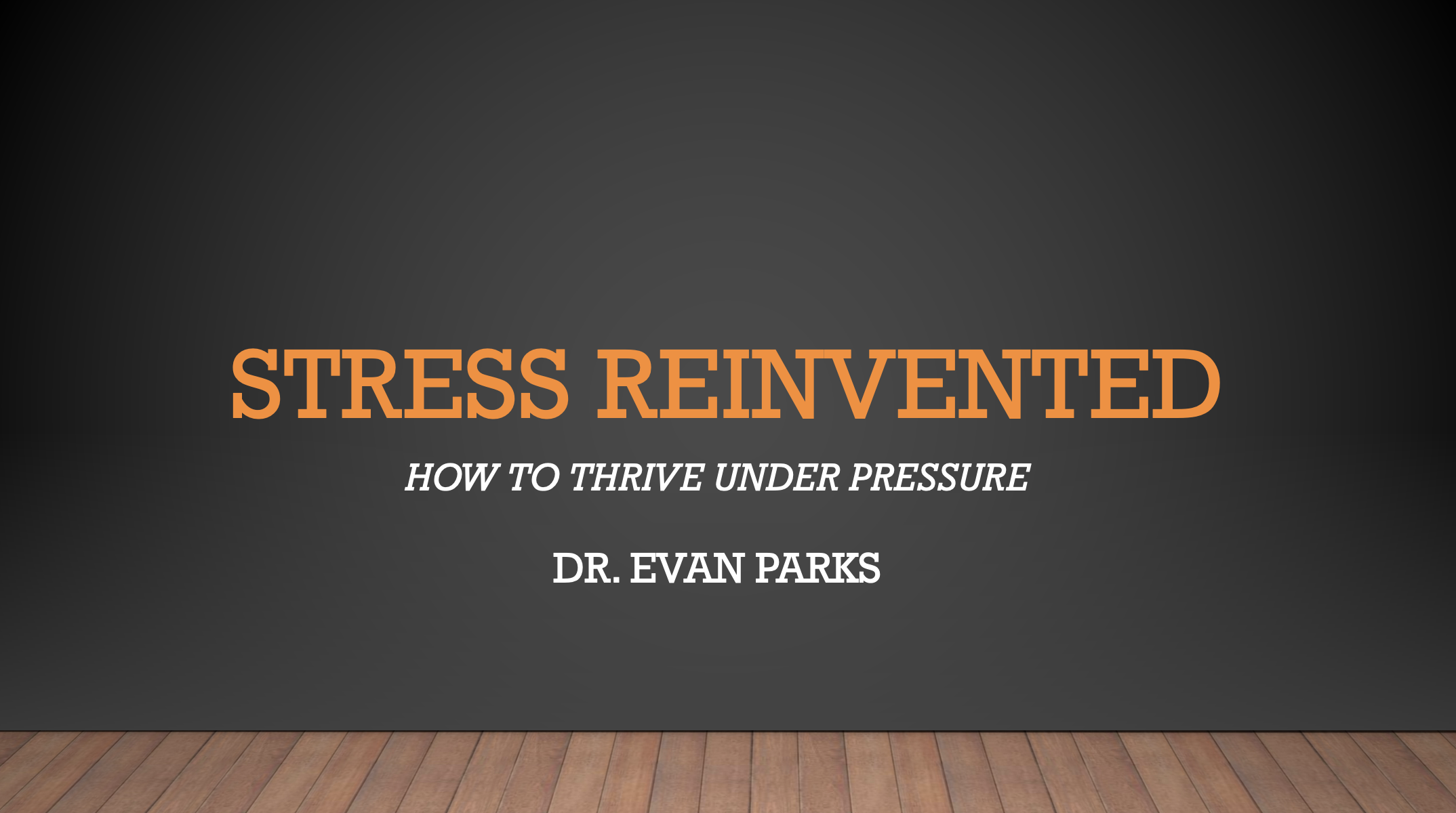 By Dr. Evan Parks—Does your life have harmony and balance, or is it out of tune and just making noise? Even if you do not regularly experience harmony and balance in your life, you might have noticed it in someone else. A person with inner balance seems to have a sense of peace regardless of what is happening around him. His life is purposeful and time is not wasted. The people around him feel cared for, challenged, and understood. How is it that some people have this inner harmony while others are just chronically out of tune, distressed, and lacking balance?
By Dr. Evan Parks—Does your life have harmony and balance, or is it out of tune and just making noise? Even if you do not regularly experience harmony and balance in your life, you might have noticed it in someone else. A person with inner balance seems to have a sense of peace regardless of what is happening around him. His life is purposeful and time is not wasted. The people around him feel cared for, challenged, and understood. How is it that some people have this inner harmony while others are just chronically out of tune, distressed, and lacking balance?
Too often in the mental health and medical fields, there is a focus on explaining mental disorders without understanding or defining mental health. This problem can be remedied when we see that mental health and the lack of it relate to harmony and balance with a person’s brain and life. For years, mental health disorders were looked at as being a result of genetics, biology, neurochemistry, the environment, behavior, emotions, thinking, or the mysterious unconscious. The focus on individual functions of the brain and body led to missing the bigger picture. The key is how all these different functions and areas of the brain are coordinated and made to work in harmony. When there is no harmony, we first become distressed and then become disturbed.
The Orchestra Of The Mind
To illustrate mental health, the inner workings of a symphony orchestra provides a helpful illustration. A symphony orchestra is comprised of four main sections of instruments (woodwinds, brass, strings, and percussion) and can have from 70 to 100 or more members. Similarly, our brain is made up of several sections, each of which specializes in different functions that regulate our body, behavior, and thinking. Within each of these sections, there are many highly specialized areas that regulate specific activities, just like the individual members of an orchestra section who specialize in playing a single instrument.
Our brain has three main divisions, the cortex, the limbic system, and the brain stem. The outer areas of the brain, the cortex, is involved in thinking, planning, judgment, movement, working memory, and sensation. The central part of the brain, the limbic system, is involved with emotional attachment, autobiographical memory, emotions, the meaning of experiences, and hormone regulation. The third area of the brain, the brain stem, controls heart rate, breathing, alertness, sleeping, and the fight, flight, freeze response.
The Brain Out Of Balance
To gain some insight into mental health, picture an orchestra that is missing the important elements of music to follow and a good conductor. What would the orchestra sound like if it started playing? Each section of the orchestra would end up going in a different direction. In fact, each member of the orchestra could play whatever he or she wanted or choose not to play at all. This situation would represent the state of the brain when there is chaos, lack of coordination and harmony. This is what we call mental distress. We can easily be upset by emotions, thoughts, urges to do things and feel like we lack self-control. If our lack of self-regulation of our emotions, thoughts, urges, or sensations continues for a length of time, we move from mental distress to a mental disorder. What we call a mental disorder is the lack of coordination and harmony in the different areas of the brain, leading to ongoing mental chaos.
State Or Trait
If our mental distress continues and balance is not restored, our state of distress will become a trait of distress. If the temporary state of distress continues (such as worrying), it can become a mental disorder (an ongoing trait of anxiety). To illustrate this, picture the brain being like an orchestra temporarily without a conductor or music to follow. One section of the brain, such as the emotions, starts becoming loud. If there is no coordination from the conductor, then emotions can become so loud that they start to exert influence over other areas of the brain that regulate behavior, thinking, sensations, perception, and memory. We all know what it is like when negative emotions are in charge of our life—it is not pleasant, especially when our behavior and thinking start to become disordered as well. If this state is temporary and balance is restored, then no further harm is done. If the state continues, our brain starts to re-wire and stays at a high level of distress and become an enduring trait.
Chaos And Rigidity
When there is a lack of coordination and harmony within the brain, the signs of lack of coordination are chaos and rigidity. Chaos occurs when individual areas of the brain act without coordination with other areas of the brain. For example, traumatic memories and sensations from years ago begin to be experienced as if they are in the present moment, changing a person’s current perception and behavior. This creates chaos and mental distress.
The other sign of lack of harmony and coordination is rigidity. When we lack the ability to see the bigger picture, which is the perspective that the orchestra conductor would have, our perception of what is right and wrong, good and true, useful or not, will be off balance. Without the bigger picture in mind, we deal with our problems in a black and white, rigid manner. Rather than seeing a range of problems, each with a different level of complexity, we see all problems as equally big and uniformly bad. Instead of seeing a wide range of possible options, we see just one solution, such as harming ourselves, or walking away from our marriage or job.
You may have witnessed what happens when a person is no longer in charge of his brain. When the middle prefrontal cortex is damaged by a stroke or head injury, the person affected will not be able to regulate his emotions, impulses, thoughts, or behavior. A formally very quiet, gentle, kind older gentleman with a stroke will reach out a try to grab a good-looking nurse as she walks by and say something he probably should not. Normally, his brain would inhibit or put a brake on these impulses, but not when his ability to regulate, coordinate, and bring harmony to his brain is damaged.
What we need is someone in charge, which is exactly what the mind can provide. In the next blog, we will look at how harmony and coordination can be brought to a brain that is out of control. We need a conductor in charge who has great music to follow.






Fascinating read. Thank you. Looking forward to the follow-up.